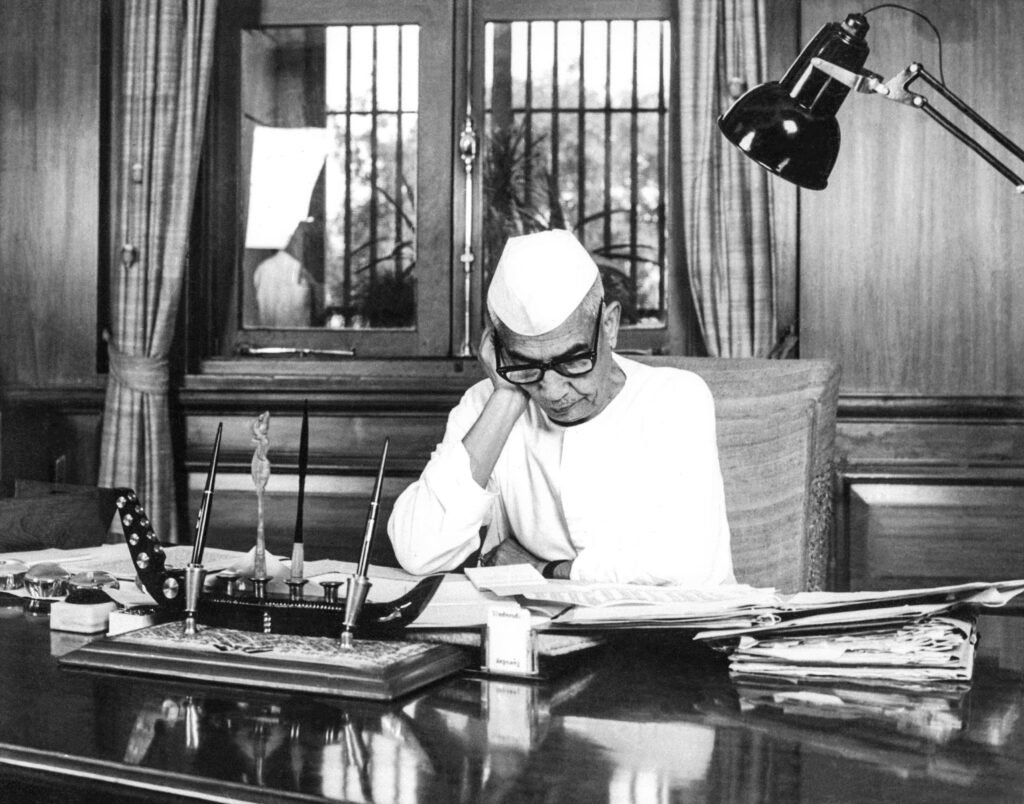“On this glorious occasion of Republic Day, let us come together to celebrate the spirit of our Constitution, the backbone of the world’s largest democracy. Today, we honor the sacrifices of our freedom fighters, the vision of our founding leaders, and the values of justice, liberty, equality, and fraternity enshrined in our Constitution.
As we hoist the tricolor and echo the national anthem, let us pledge to uphold the principles that define our nation – inclusivity, unity in diversity, and unwavering dedication to progress.
May this Republic Day inspire us to work toward a brighter future where every citizen thrives with dignity, opportunities, and rights. Jai Hind!
Happy Republic Day! 🇮🇳”

India observes 26th January as Republic Day, marking the day the Constitution of India came into effect in 1950, transforming the country into a sovereign, democratic republic. This day holds profound historical significance, symbolizing the culmination of India’s struggle for independence, the triumph of constitutional ideals, and the establishment of the world’s largest democracy.
Table of Contents
In this article, we’ll explore the historical journey to Republic Day, the monumental task of drafting the Constitution, the significance of this day, India’s role as the largest democracy, and the challenges in upholding democratic ideals. References to key books, journals, and official records will further enrich the discussion.
1. Historical Background: From Colonization to Republic Day
1.1 Colonization and the Long Struggle for Independence
India’s transformation from a colony to a republic was fraught with challenges. For nearly two centuries, the British colonial administration dominated the subcontinent, exploiting its resources and suppressing its people. Historians like Bipan Chandra in India’s Struggle for Independence detail how policies like the Permanent Settlement and the Drain Theory (as discussed by Dadabhai Naoroji in his seminal work, Poverty and Un-British Rule in India) impoverished the Indian population.
The 1857 Revolt, often referred to as the first war of independence, marked the beginning of organized resistance against British rule. However, it wasn’t until the late 19th and early 20th centuries that the freedom movement gained momentum through the Indian National Congress (INC) and influential leaders like Bal Gangadhar Tilak, Mahatma Gandhi, and Subhas Chandra Bose.
1.2 The Purna Swaraj Resolution of 1930
A pivotal moment in India’s freedom struggle was the Lahore Session of the INC in 1929, where Jawaharlal Nehru declared complete independence (Purna Swaraj) as the ultimate goal. This resolution, passed on 26th January 1930, called for Indians to celebrate Independence Day annually until freedom was achieved.
Historian Sumit Sarkar, in his book Modern India (1885–1947), explains how this resolution became a unifying force for Indians, symbolizing their determination for self-rule. The date of 26th January was later chosen to honor this historic declaration when India officially became a republic in 1950.
1.3 Achieving Independence in 1947
The years leading up to independence were marked by significant events, including the Quit India Movement (1942)and the eventual withdrawal of British forces in 1947. However, independence came at the cost of partition, resulting in the creation of Pakistan and widespread communal violence. Books like The Great Partition: The Making of India and Pakistan by Yasmin Khan provide a detailed account of this turbulent period.
2. The Drafting of the Indian Constitution
2.1 Formation of the Constituent Assembly
The Constituent Assembly of India was formed in 1946 to draft a Constitution that would reflect the aspirations of a newly independent nation. The Assembly comprised 389 members, representing diverse regions, communities, and political ideologies.
2.2 The Role of Dr. B.R. Ambedkar
Dr. B.R. Ambedkar, as the chairman of the Drafting Committee, emerged as the principal architect of the Constitution. In his speeches, compiled in The Makers of Modern India by Ramachandra Guha, Ambedkar emphasized the need for social and economic justice, ensuring provisions for fundamental rights, reservation for marginalized communities, and safeguards against discrimination.
Ambedkar’s vision for equality was inspired by his experiences of caste-based oppression, which he documented in Annihilation of Caste. His contributions ensured that the Constitution upheld the ideals of liberty, equality, and fraternity.
2.3 Adoption of the Constitution
The Constitution, drafted over 2 years, 11 months, and 18 days, was adopted on 26th November 1949 and came into effect on 26th January 1950. The delay allowed the symbolic alignment with the Purna Swaraj resolution.
Prominent scholar Granville Austin, in The Indian Constitution: Cornerstone of a Nation, highlights how the Constitution balanced the need for a strong central authority with provisions for states’ autonomy.
3. India as the Largest Democracy
3.1 Universal Adult Suffrage
One of the Constitution’s most revolutionary features was granting universal adult suffrage, allowing every citizen above 21 (later reduced to 18) the right to vote, irrespective of caste, gender, or wealth. This decision made India a trailblazer among newly independent nations in embracing democracy.
3.2 Diversity as a Strength
India’s democracy thrives on its diversity. With 22 scheduled languages and over 1,600 dialects, the country demonstrates how multiple identities can coexist within a democratic framework. Books like India After Gandhi by Ramachandra Guha explore how India has maintained its unity despite linguistic, religious, and cultural differences.
3.3 Electoral System
The Election Commission of India, established in 1950, plays a crucial role in conducting free and fair elections. India’s general elections, often described as the largest democratic exercise in the world, involve hundreds of millions of voters.
4. Significance of Republic Day
4.1 Celebrating Constitutional Values
Republic Day is a celebration of the ideals enshrined in the Constitution:
- Justice: Social, economic, and political.
- Liberty: Of thought, expression, belief, faith, and worship.
- Equality: Of status and opportunity.
- Fraternity: Ensuring the dignity of the individual and the unity of the nation.
4.2 The Republic Day Parade
The Republic Day Parade in New Delhi is a grand spectacle showcasing India’s cultural diversity, military strength, and technological advancements. States present tableaux highlighting their heritage, while the armed forces demonstrate their capabilities, including missile systems like Agni-V.
4.3 Awards and Recognition
The day also honors exceptional contributions to the nation through awards like the Padma Awards and Gallantry Medals, emphasizing the importance of service to the country.
5. Challenges in Upholding Democratic Ideals
5.1 Social Inequalities
Despite constitutional guarantees, issues like caste discrimination, gender inequality, and poverty persist. Dr. Ambedkar, in his final speech to the Constituent Assembly, warned against social inequalities undermining democracy.
5.2 Political Polarization
The rise of communalism and political polarization threatens the secular fabric of the nation. Books like Why India Votes? by Mukulika Banerjee analyze the complexities of India’s electoral system and its challenges.
5.3 Need for Civic Awareness
A lack of awareness about constitutional rights and duties among citizens often hampers democratic progress. The Fundamental Duties, introduced by the 42nd Amendment in 1976, remain underutilized in promoting civic responsibility.
6. References and Sources
- Books:
- India’s Struggle for Independence by Bipan Chandra
- The Indian Constitution: Cornerstone of a Nation by Granville Austin
- Annihilation of Caste by Dr. B.R. Ambedkar
- India After Gandhi by Ramachandra Guha
- The Great Partition: The Making of India and Pakistan by Yasmin Khan
- Journals and Articles:
- “India’s Republic: A Historical Analysis” (Journal of South Asian Studies, 2020)
- “Constitutional Morality and Indian Democracy” (Economic and Political Weekly, 2018)
- Official Documents:
- The Constitution of India
- Speeches of Dr. B.R. Ambedkar in the Constituent Assembly
7. Conclusion
26th January represents the fulfillment of India’s aspirations for freedom, justice, and equality. It is a reminder of the sacrifices made by freedom fighters and the responsibilities citizens bear in upholding constitutional values. As the world’s largest democracy, India continues to inspire with its resilience and commitment to pluralism.
While challenges remain, the spirit of Republic Day calls on every Indian to contribute to building a just, equitable, and inclusive nation.


